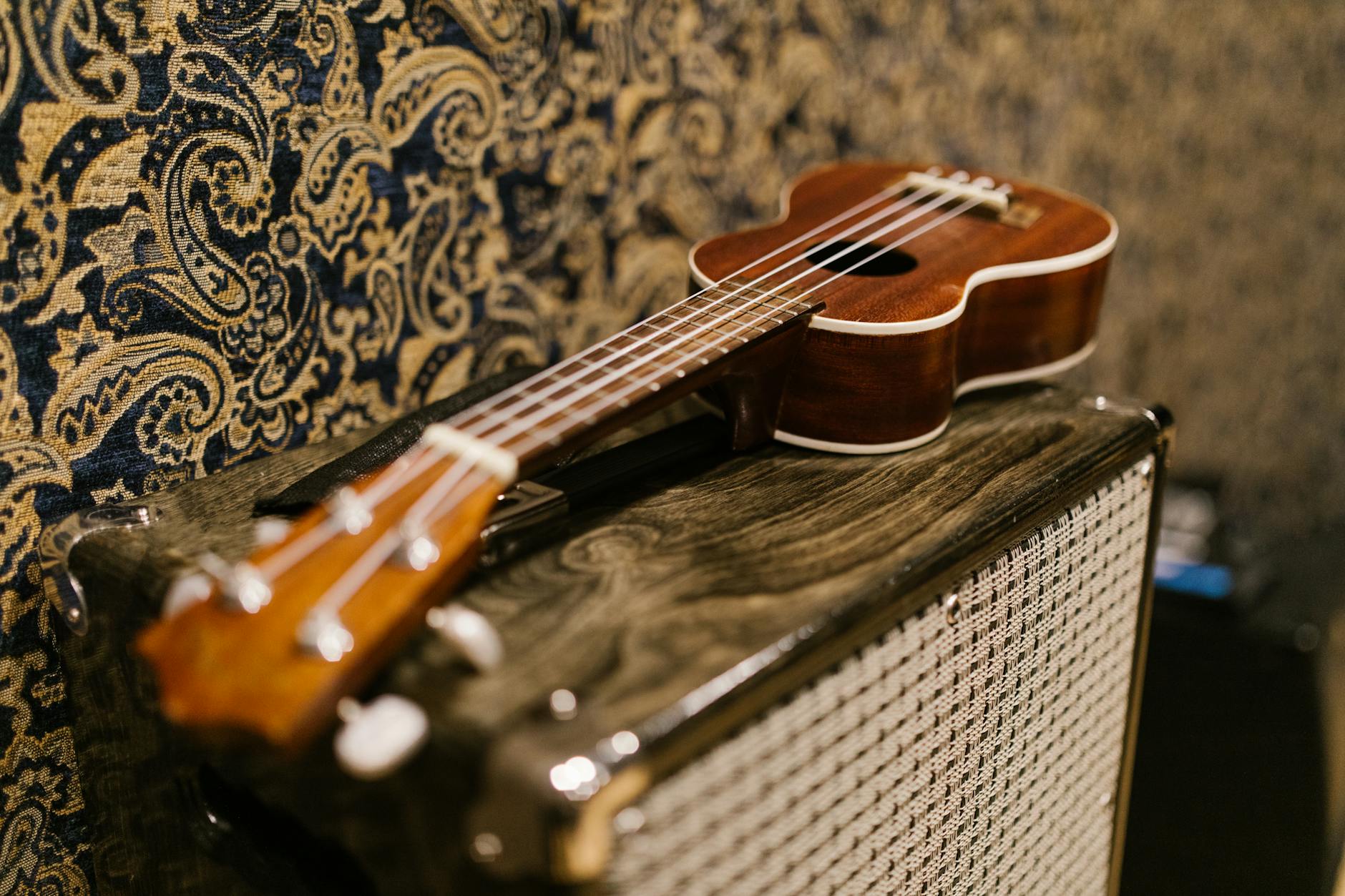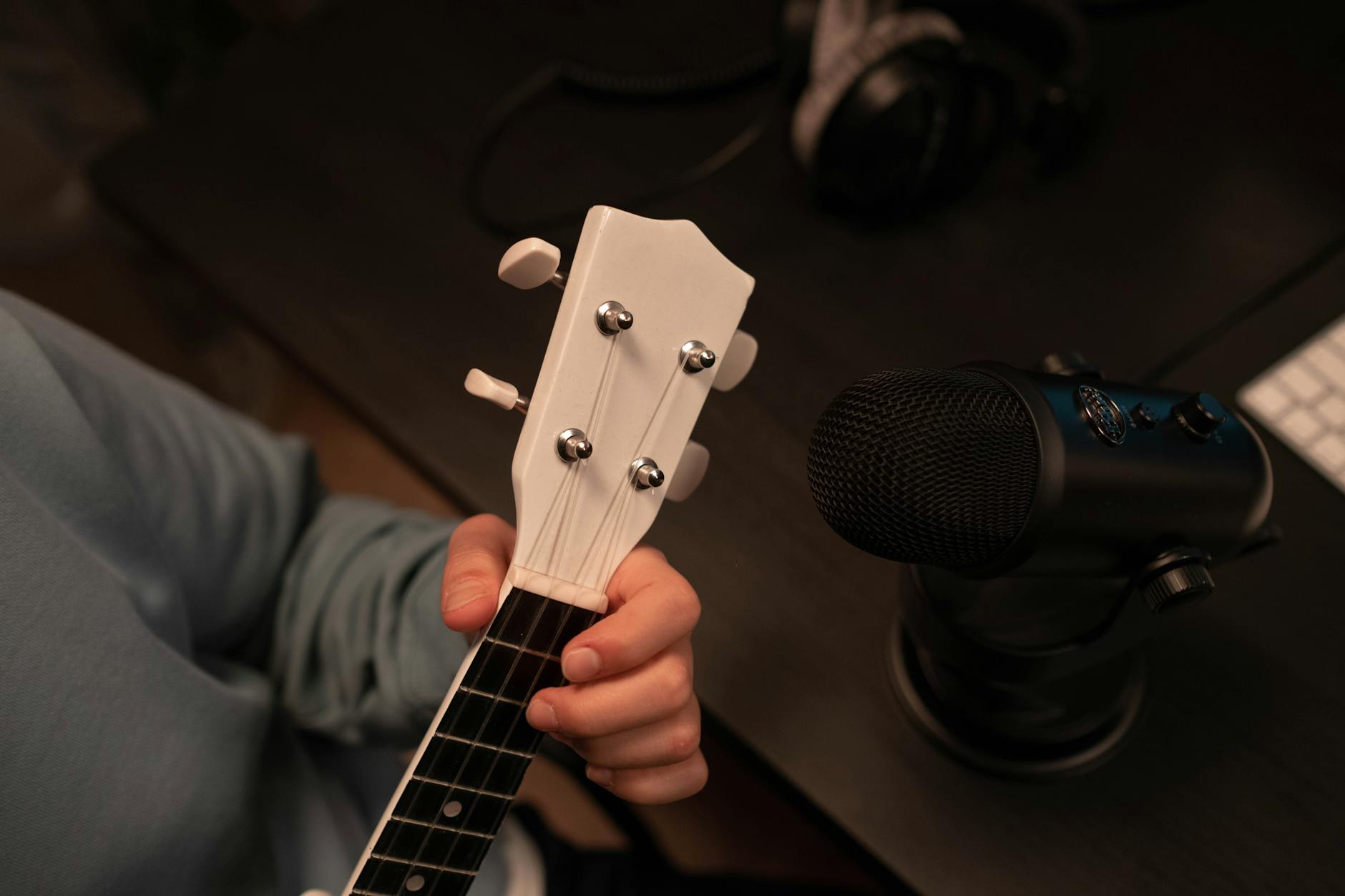How Can You Record Acoustic Guitar That Actually Sounds Rich and Full?
Discover how to record acoustic guitar rich full tone. Fix thin, metallic sound fast with proven studio tips. Learn pro techniques today!

Ever hit record on your acoustic, only to cringe when the playback sounds thin, lifeless, or metallic? This scenario frustrates beginners and pros alike. The truth is, capturing a truly rich, full tone isn’t magic—it’s knowing why recordings fall flat, then fixing the source. Chasing that studio warmth and body at home? It’s totally possible. With the right prep, smart mic choices, and a few pro tricks, anyone can get that inspiring, professional acoustic sound on tape. This guide zeroes in on exactly where most players struggle—and what actually makes your tracks finally sound big and believable in the mix.
What You'll Learn:
- Why most acoustic recordings sound thin (and how to fix it before hitting record)
- How room acoustics and guitar setup shape your recorded tone
- Choosing the right microphone for warm, full acoustic sound
- Pro mic placement techniques—including stereo and off-axis tricks
- How to blend DI and mic signals for maximum richness
- Essential EQ and mix tips that keep acoustic guitar tracks sounding lively
Why Do Acoustic Guitar Recordings Sound Thin? (And How to Fix It at the Source)
Plenty of home recordings end up brittle or boxy. Even expensive mics and plugins can’t rescue a weak source. Turns out, most problems start before the first note is played—right in the room, guitar, or technique itself. Fixing these early makes pro tone possible without chasing endless gear upgrades.
The Most Common Recording Frustrations (And Their Real Causes)
Most “tinny” or lifeless recordings have a clear culprit. It’s often one (or more) of these:
- Bad room acoustics—hard surfaces bounce sound in harsh ways
- Wrong mic choice—too bright or dull for the guitar’s tone
- Neglected guitar setup—old strings, poor intonation, dead frets
- Poor mic placement—aiming at the soundhole or room corners
According to Mastering.com, “getting it right at the source” (GIRATS) solves 80% of mix headaches. It’s not just about gear.
GIRATS: Why Source Tone Matters More Than Plugins
Studio pros rely on the GIRATS principle: polish the raw acoustic tone first. No amount of EQ or reverb can truly fix a dull or brittle track. Resetting intonation, changing strings, and checking the action all help. And there’s science too; the biggest sonic improvements come from the physical setup—not the plugins later.
- Fresh strings add shimmer and sustain
- Tuning between every take keeps harmonics balanced
- Humidification prevents warping and harsh overtones
This prep saves hours in the mix stage. Professional daily routines almost always start here.
Setting Up Your Guitar and Room for Success
Getting room reflections under control is essential. Even with just a few blankets or a thick rug, harsh highs from hard walls can be tamed. Place the guitar away from room corners. Some players even make quick “vocal booth” tents from bedding to tame reflections. As for the guitar, set intonation, swap out old strings, and keep it clean and properly humidified. These basics are non-negotiable for capturing a rich, full tone.
Dial in these fundamentals, and the rest comes much easier. Next up: choosing the right microphone for your sound and budget.
Choosing the Right Microphone(s) for Rich, Full Acoustic Tone
The microphone shapes how your acoustic guitar is heard—sometimes more than the guitar itself. There’s good news: you don’t need vintage rarities for warmth and clarity. Knowing what each mic does helps you pick—and blend—for the best results.
Mic Types Demystified: SDC, LDC, Ribbon, and Dynamic
Each mic type brings its own flavor. Here’s what stands out:
- SDC (small diaphragm condenser): Super detailed, fast transient response, often bright. Great for fingerstyle.
- LDC (large diaphragm condenser): Smooth, more body—adds warmth to strummed parts or vocals.
- Ribbon: Tames harshness, gives a velvety top end, perfect for vintage richness.
- Dynamic: Sometimes gritty, less sensitive, but works for aggressive strumming or in untreated rooms.
Hollyland’s 2025 guide shows even affordable SDC/LDC models can yield professional results if placed well.
Blending Mics: The Pro’s Shortcut to Warmth and Clarity
Many engineers pair a ribbon with a condenser mic to capture both warmth and clarity. Placing both at the 12th fret (one slightly off-axis) creates a balanced, cohesive track. Listen for phase issues and adjust placement as needed for the best blend. Try this:
- Put the SDC at the 12th fret
- Add a ribbon mic just behind, angled toward the bridge
- Record both and sum for a rich image
- Move the ribbon a few inches farther for more depth
This combo solves many “thinness” complaints in modern acoustic recordings.
Choosing the Right Mic for Your Guitar and Genre
Matching mic to guitar style really matters. Jumbo body? Try a ribbon or LDC to soften brightness. Smaller bodies or fingerstyle? An SDC brings out subtlety. For percussive or aggressive strumming, a dynamic can keep boom in check. Always consider genre and playing approach when picking your mic. Test a few if possible, and let your ears decide.
The right mic sets the stage for the next step: pro-level placement for warmth and consistency.
Mic Placement Techniques for a Warm, Professional Acoustic Sound
Even the best mic can’t make up for poor placement. The difference between thin, harsh tone and pro-level warmth often comes down to inches, not equipment. Smart placement brings out your guitar’s natural character—while solving problems like boxiness or phase issues before they start.
Mono Placement: The 12th Fret Sweet Spot
Placing a mic 6–12 inches from the 12th fret captures balanced tone—full lows, clear highs. Avoid the soundhole, which can sound boomy or boxy. Instead, aim slightly off-axis toward the neck or body, depending on the needed warmth.
- For more body: Angle the mic toward the bridge
- Extra sparkle: Aim slightly up the neck
- Prevent harsh highs: Move the mic back a couple inches
According to Hollyland, marking mic positions with tape or a pencil helps replicate takes and build consistency.
Stereo Recording: XY, M/S, and Blumlein Explained
Stereo setups add width and realism to solo parts. Here’s how they compare:
- XY: Two matched SDCs, 90°–110°, capsules stacked at the 12th fret—great for phase-safe width.
- M/S: One cardioid straight at the 12th fret, figure-8 at 90°, allows post-recording width control.
- Blumlein: Two ribbon mics, 90°, captures a lush stereo field, best in a treated room.
Set distances between 8–14 inches based on room and guitar—closer for intimacy, farther for more ambience. Always check the stereo image for phase before committing.
Pro Tips: Off-Axis Placement, Proximity Effect, and Consistency
Going slightly off-axis softens high end without EQ. Use proximity effect (the closer the mic, the more low-end boost) to taste—just watch for muddiness. Record several takes at slightly different angles to find the guitar’s sweet spot. And always listen for weird phase issues—flipping polarity can help.
These placement tweaks fix much more than mixing ever will. Next: blending in DI for ultimate fullness.
Should You Use DI as Well as Mics? Hybrid Recording for Fullness
Hybrid recording—blending DI and mic signals—is a pro shortcut for fullness and stability. Relying on one source alone can leave your tracks sounding thin or inconsistent. The trick: combine both and fix problems early, not during mixing.
DI vs. Mic: What Each Captures (And Misses)
DI (direct input) pickups grab clear, noise-free signal—handy for live use and easy editing. But they often sound quacky or sterile. Mics capture room, wood, and air—sometimes with more character but also more risk of phase issues or unwanted noise. Here’s a quick breakdown:
- DI: Punch, clarity, perfect for adding presence
- Mic: Warmth, body, and “acoustic reality”
- Blend: Stability with richness—best of both worlds
If possible, always record both; deciding in the mix gives more control.
Blending DI and Mic for a Rich, Cohesive Tone
Start by recording both DI and mic, then balance their levels. Next, check for phase cancellation—if notes sound hollow or frequencies disappear, flip the phase on either channel. Here’s a workflow:
- Record a short passage both ways
- Solo both, listen for body and clarity
- Flip phase if things sound hollow
- Time-align tracks if necessary (slide DI by a few samples)
- Blend for taste—mic for warmth, DI for snap
Doing this right keeps your sound lively and “real” in a mix.
Troubleshooting: Fixing Phase and Thinness in Hybrid Tracks
If your blended sound still feels thin, check the phase again or nudge one track a few milliseconds. Cutting harsh highs from the DI channel (above 5kHz) and rolling off lows from the mic source (below 80Hz) can help keep things from getting muddy or metallic. The fix almost always comes earlier in the chain, not with plugins later on.
Blending the best of both signals delivers the biggest, most natural sound most players want. Now to give it polish with a few mix moves.
Mixing Essentials: EQ, Compression, and Effects for a Full Acoustic Sound
The right mixing moves can transform a good track into that elusive, lush acoustic sound. But it’s all about subtlety—too much EQ or heavy compression, and everything falls flat. So, polish with technique, not brute force, and let the guitar’s character shine through.
EQ: Shaping the Acoustic Guitar’s Frequency Spectrum
Most quality acoustics need just a bit of EQ. Start by rolling off lows below 80-100Hz to kill room boom. For clarity, notch out 300-400Hz if there’s “boxiness” and dial back 8-12kHz to tame harshness. Here’s a checklist:
- High-pass at 80-100Hz: clears mud
- Small dip at 300-400Hz: removes boxy mids
- Gentle cut at 8-12kHz: softens brittle highs
Serenade Magazine’s pro tips confirm these core EQ moves for fullness.
Compression and Dynamics: Keeping It Lively
Compression should enhance dynamics, not squash life out of the guitar. Aim for a low ratio (2:1 or less), slow attack (over 20ms), and fast to medium release. Here’s a quick process:
- Ratio: 2:1 or less—preserve feel
- Attack: 20-50ms—let transients pop
- Release: 40-120ms—smooth sustain
Listen for strumming detail and finger noise—compress enough to even levels, but not so much that the sound feels choked. If it gets dull, back off.
Reverb, Delay, and Ambience: Adding Space Without Losing Clarity
A short, natural reverb gives sense of space. Keep it subtle—two to three seconds max on a hall or plate setting. For extra width, add a tiny slapback delay (40-80ms, low in mix). Avoid drowning the guitar—let natural resonance do most of the work. These touches create mix polish without crowding the guitar’s true tone.
Gentle mix moves provide the final polish, letting all that acoustic warmth finally shine.
Frequently Asked Questions
How do I stop my acoustic guitar sounding tinny when recording?
Start by treating your room with blankets or rugs and use fresh strings. Place a condenser or ribbon mic 6–12 inches from the 12th fret, angled slightly off-axis. Avoid recording too close to the soundhole or hard surfaces, as these create harsh, tinny reflections.
What mic placement gives a warm acoustic tone?
Mic placement at the 12th fret, 6–12 inches away, aimed slightly off-axis, produces warmth and clarity. Stereo techniques like XY with matched condensers also add spaciousness while retaining warmth. Always check the position for phase and adjust distance for added body or sparkle.
Should I use DI as well as mic for acoustic recording?
Blending both DI and mic signals often gives the fullest, most reliable sound. DI adds presence and clarity; the mic captures warmth and natural resonance. Make sure to check for phase issues and balance levels for a cohesive tone.
Why does my acoustic guitar sound good in the room but thin on recordings?
This happens because microphones and rooms interact differently than ears. Mic placement, poor room acoustics, and old strings often cause recordings to lack body. Improving room treatment, freshening up the guitar’s setup, and choosing the right mic spot solve most of these problems.
Is it a mistake to mic the soundhole directly on acoustic guitar?
Directly miking the soundhole usually results in boomy, muddy, or boxy tones. The 12th fret position is better for balance. If you want a rounder tone, angle the mic toward the bridge instead of the soundhole.
Capturing a rich, full acoustic guitar recording isn’t about racks of gear—it’s about respecting the source and making smart decisions at every stage. Treat your instrument and space right, pick and place your mics with intention, and blend with care. Pay attention to the little adjustments: a string change, a new mic angle, rolling off lows in the mix. These moves add up fast. Want authentic, professional acoustic recordings? They start before you ever hit record. Try these techniques in your next session and stack your results against your last take—most players hear dramatic improvement right away. Step into the room, listen, and make one change at a time. Your next track might just surprise you.
Key Takeaways
- Achieving rich, full acoustic tone is mostly about the source and mic placement.
- Blending DI with mic tracks and checking phase delivers a robust, pro sound.
- Small mix tweaks (EQ, compression, reverb) provide the final polish without losing natural feel.
- Listening and adjusting at every step is the fastest route to authentic, lush acoustic recordings.
Related Topics
Explore more articles in these topics to deepen your knowledge.
Related Articles

Recording Acoustic Guitar at Home That Doesn’t Sound Muffled
Learn record acoustic guitar home clear tone with expert guitar instruction and practical techniques.

Can You Record Acoustic Guitar That Doesn’t Sound Thin or Noisy?
Learn how to record acoustic guitar clean sound at home—fix noise, get warmth, and capture pro results. Discover easy steps for warm, clean recordings.

Best Free DAWs for Guitarists in 2025 with Setup & Workflow Tips
Discover the best free DAWs for guitarists 2025. Compare features, get workflow tips, and find the perfect guitar-friendly DAW. Start recording better now!
Discover more insights from our blog to enhance your musical journey.
